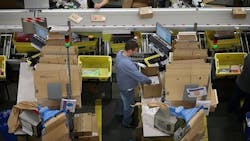According to the National Safety Council, fatigue costs U.S. employers more than $130 billion a year in health-related lost productivity.
The American Society of Safety Professionals (ASSP) Foundation is encouraging employers to make a New Year’s resolution to monitor the fatigue levels of its workers to reduce injuries.
The organization released a report on Jan 3, based on a three-year study, which demonstrated how to capture a worker’s safety performance and translate the data into personal fatigue levels. The study was led by Dr. Lora Cavuoto at the University at Buffalo and Dr. Fadel Megahed at the Farmer School of Business at Miami University of Ohio. The project also involved researchers from Auburn University and the University of Dayton. https://www.assp.org/docs/default-source/assp-foundation/fatigue_final_earlydistribution_121718.pdf
According to the National Safety Council, fatigue costs U.S. employers more than $130 billion a year in health-related lost productivity. One particular causes of fatigue, sleep disorders which affect, more than 70 million Americans, is prevalent in warehousing, manufacturing, truck driving and construction jobs.
A typical U.S. company with 1,000 employees can expect to lose more than $1 million each year to fatigue, which can often increase the workloads of other human operators.
“Fatigue is a hidden danger in the workplace, but now we’ve tackled the measurement and modeling of fatigue through wearable sensors, incorporating big data analytics and safety engineering,” Cavuoto said. “Information is power, so knowing when, where and how fatigue impacts worker safety is critical. You can’t identify solutions until you pinpoint the problems.”
The research funded by the ASSP Foundation involved 25 participants wearing non-obtrusive wrist, hip and ankle sensors while completing three tasks commonly performed by manufacturing workers – assembly, stocking and remaining in a static or flexed position. Each person worked in three-hour increments. The study demonstrated that meaningful safety data can be collected by an employer in a cost-effective manner without interfering with a worker’s daily routine.
“By setting parameters, we identified behavioral changes in how people conduct work over time,” Cavuoto said. “For example, we saw how workers performed the same task in the first hour as compared to the third hour when fatigue became a factor. Wearable technology can uncover precursors to larger problems and help establish safety interventions that may call for scheduled breaks, posture adjustments or vitamin supplements that help the body.”
The ASSP believe this study is the first step in creating a comprehensive framework that can identify research-supported interventions that protect workers from injuries caused by being tired on the job.
